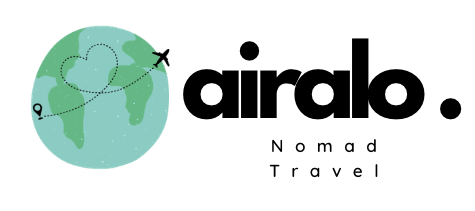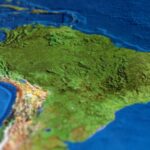
Southeast Asia is a vibrant travel destination with a rich cultural heritage, stunning natural landscapes and warm and hospitable people. If you plan to visit this area within two weeks, you can choose to combine some classic attractions with more leisurely destinations to experience local history and culture while enjoying the fun of relaxation and exploration. The following is a suggestion for a two-week travel itinerary in Southeast Asia, covering Thailand, Vietnam and Cambodia. It is suitable for travelers who come to Southeast Asia for the first time and can also meet the needs of different interests.
- Week 1: Thailand vs. Vietnam
- Days 1-3: Bangkok, Thailand
- Bangkok is one of the most dynamic cities in Southeast Asia. The unique charm of modernization and traditional culture is intoxicating. Whether you’re exploring history in majestic temples or shopping in trendy malls, Bangkok has surprises around every corner.
- Grand Palace and Temple of the Emerald Buddha
The Grand Palace is one of the most iconic buildings in Thailand. It was built in the 18th century and has been the residence of successive Thai kings. The magnificent architecture and exquisitely carved Buddha statues in the palace demonstrate the luxury and historical heritage of the Thai royal family. Wat Phra Kaew, located within the Grand Palace, is one of the holiest Buddhist temples in Thailand. The Jade Buddha statue enshrined in the temple is carved from a piece of green jade and is one of the most famous Buddha statues in the world. When visiting the Grand Palace, you can not only appreciate the magnificent architectural style, but also deeply feel Thailand’s religious culture and royal history. - Wat Pho
Wat Pho is one of the oldest temples in Bangkok and the largest Buddhist temple in Thailand. The reclining Buddha here is 46 meters long. The golden Buddha statue lies on his back in the temple, giving people a shocking feeling. Wat Pho is also known as the birthplace of Thai massage. If you have time, you can enjoy a traditional Thai massage in the temple to relax and experience part of Thai culture. - Chao Phraya River Cruise
The Chao Phraya River is the lifeline of Bangkok, with numerous temples and traditional buildings dotted along its banks. You can choose to take a long-tail boat on the Chao Phraya River to easily explore the riverside scenery. Attractions on the river include Wat Arun and Wat Phutthaisawan. The architectural styles of these temples are unique and reflect traditional Thai architectural art. While sailing along the river, the crew will explain the surrounding attractions and historical background to you, allowing you to experience Bangkok’s long culture. - Khao San Road
Khao San Road is one of Bangkok’s most famous backpacker neighborhoods and a gathering place for young travelers. It is very lively during the day, and the streets are lined with travel agencies, cafes, restaurants and small shops with a wide range of souvenirs. At night, the bars and stalls in the streets and alleys begin to come alive, with music, dancing and food filling the streets. It is an ideal place to experience Bangkok’s nightlife. - Tips: Traffic in Bangkok is heavy, especially during morning and evening rush hours. In order to save time, it is recommended to take the BTS (sky train) or subway. These public transportation methods are not only fast but also convenient. If you need to take a taxi, you can use Grab (similar to Uber) to avoid traffic jams.
- Days 4-6: Ho Chi Minh City, Vietnam
- Fly from Bangkok to Ho Chi Minh City, also known as “Saigon”, the commercial and cultural center of Vietnam. Ho Chi Minh City combines French colonial architectural style with modern urban landscape, giving people a unique experience of history and modernity.
- Reunification Palace
Reunification Palace, also known as the Presidential Palace of South Vietnam, is a symbol of Vietnamese history. This was once the official residence of the President of South Vietnam. At the end of the Vietnam War in 1975, North Vietnamese tanks broke through the gate, marking the end of the war. Now, the Reunification Palace has been turned into a museum, displaying historical artifacts from the war period. Visitors can visit the halls of the Presidential Palace, conference rooms, the President’s private office, etc. This is an important place to learn about Vietnamese history. - Saigon Cathedral and Post Office
Notre-Dame Cathedral Basilica of Saigon was built during the French colonial period. This red brick church has a majestic appearance and a towering spire. It is one of the landmarks of Ho Chi Minh City. The stained glass windows and marble altar inside the church give this church a sacred atmosphere. The Saigon Central Post Office (Saigon Central Post Office) adjacent to the cathedral is also a French colonial building. It retains many original decorations and details inside and is a typical French building. You can also buy some postcards with local characteristics in the post office to send to family and friends. - Ben Thanh Market
Ben Thanh Market is one of the most famous traditional markets in Ho Chi Minh City and a good place to experience the authentic Vietnamese style. The market has a wide variety of products, ranging from handicrafts to fresh fruits and spices. This is not only a great place for shopping, but also a great place to experience the traditional Vietnamese lifestyle. There are also many small vendors in the market selling all kinds of authentic snacks, such as Vietnamese spring rolls, Pho, etc. You can taste a variety of Vietnamese food. - Mui Ne Beach
Mui Ne Beach is a relatively quiet beach resort located near Ho Chi Minh City. If time permits, it is recommended to spend a day traveling to Mui Ne to enjoy the tranquility and beauty of the beach. The sand dune landscape here is very unique. It is one of the few places in Vietnam where you can do activities such as sand dune skateboarding. It is also a paradise for photography enthusiasts. - Tips: Traffic in Ho Chi Minh City is relatively congested, especially during peak hours. In order to travel more conveniently, you can use taxi services such as Grab to avoid the cumbersomeness of traditional taxis.
- Day 7: Head to Cambodia, Phnom Penh
- Fly from Ho Chi Minh City to Phnom Penh, the capital of Cambodia. Phnom Penh is a city full of history. Once a center during the Khmer Rouge period, it was deeply affected by war and conflict, but has now been revitalized into a tourist destination rich in culture and history.
- Independence Square and Royal Palace
Independence Square (Independence Monument) in Phnom Penh is one of Cambodia’s landmark buildings. It was built in 1958 to symbolize the country’s independence from French colonial rule. There are many attractions worth visiting around Independence Square, such as the Royal Palace and the Silver Pagoda. The Royal Palace is the residence of the King of Cambodia. The palace is gorgeously decorated and has a spacious courtyard. It is a representative display of Cambodia’s traditional architectural style. The floor of the Silver Pagoda is covered with thousands of silver bricks and is an amazing religious and historical site. - Museum of Killing
The Tuol Sleng Genocide Museum is a place that profoundly displays the history of Cambodia, especially the horrific history of the Khmer Rouge period. The Khmer Rouge government carried out extremely brutal political purges from 1975 to 1979, and millions of people were persecuted. The Killing Museum was originally a school that was later transformed into a prison and detention center by the Khmer Rouge. Today, it serves as a museum to show visitors this painful history. Although it is heavy, it is crucial to understanding the history and culture of Cambodia.
Week 2: Cambodia vs. Thailand
Days 8-10: Siem Reap, Cambodia
Siem Reap is home to the world-famous tourist attraction Angkor Wat and is a city full of historical charm. Not only does it have a magnificent ancient temple complex, but it is also full of mysterious cultural atmosphere. It is the best place to explore the historical and cultural treasures of Southeast Asia.
angkor wat
Angkor Wat is one of the largest religious building complexes in the world. It was built in the 12th century as a Hindu temple and later converted into a Buddhist temple. It is recommended to spend at least two days to explore these vast temple ruins in depth, as each building here is rich in historical and artistic value.
- angkor temple(Angkor Wat): The most iconic temple of Angkor Wat, its magnificent architecture and exquisite carvings make it one of the seven wonders of the world. When visiting, you can take pictures of the most charming scenery in the early morning or evening when the light is soft, especially from the main hall of the temple, where you can have a sweeping view of the vastness of the entire site.
- Bayon Temple(Bayon Temple): The most famous feature of Bayon Temple is that there are huge face statues on the tops of all towers inside and outside the temple. The faces have various expressions, giving people a mysterious feeling. The walls of the temple are beautifully carved, depicting scenes of ancient life and history. It is a unique landscape in Angkor Wat.
- Pagoda Temple(Ta Prohm): Ta Prohm is popular for its ancient appearance and blend with its surrounding nature. Many places inside the temple are swallowed up by huge tree roots, forming a strange landscape. This temple is one of the filming locations for the movie “Tomb Raider”, so it has become a particularly favorite check-in point for tourists.
Bakken Mountain
Phnom Bakheng is one of the best places to watch the sunset, located in the southwest corner of the Angkor Wat ruins area. Climbing to the top of the mountain, you will be able to overlook the magnificent scenery of the entire Angkor monuments, especially in the evening, when the afterglow of the setting sun shines on the ancient temple complex and the surrounding jungle, the scenery is charming and intoxicating. This is also an ideal place to take panoramic photos of the Angkor monuments, especially the changing light at sunset, the effect is very stunning.
tonle sap lake
Tonle Sap Lake is the largest inland lake in Southeast Asia, and its water area fluctuates greatly with seasonal changes. There are many floating villages in the lake area, and the villagers’ lifestyle depends entirely on the lake water. Here you can take a boat trip, learn about local water life, and even visit floating schools, markets, churches, etc. The boat is sailing on the lake, surrounded by dense jungle, and the water and sky are the same color. It is an ideal place to experience the Cambodian countryside. It is recommended to take a boat in the morning or evening, when the lake is calmest and the scenery is the most charming.
Tips: The weather in the Angkor Wat area is usually very hot, especially during the day with strong sunlight. Therefore, it is recommended to wear light, breathable clothing, a wide-brimmed hat, sunglasses and plenty of sunscreen. Because the temperature is high, you need to carry water with you at all times to maintain your strength. In order to avoid the tourist peak, it is best to visit the temple in the early morning or evening. This will not only avoid the scorching sun, but also capture the most beautiful light and shadow effects.
Days 11-13: Bangkok and Phuket, Thailand
After a fulfilling trip to Cambodia, you can return to Thailand and enjoy the next few days of your vacation. Not only does Thailand have stunning beaches, it’s also filled with rich cultural experiences. You can choose to enjoy the modern atmosphere of the city in Bangkok, or you can go to Phuket to enjoy the tranquility and beauty of the island.
Phuket
Phuket is the largest island in Thailand and one of the famous resorts in Southeast Asia. The beaches here, such as Patong Beach, Kata Beach and Karon Beach, are famous for their fine white sand and clear water, suitable for various water activities, such as diving, snorkeling, and sailing. wait. Whether you’re swimming under the sea or sunbathing on the beach, Phuket offers the ideal holiday experience.
- Diving and snorkeling: The waters around Phuket are world-famous diving destinations, especially the nearby Phi Phi Islands and Coral Island, where the water is crystal clear, colorful coral reefs and rich marine life make Diving and snorkeling become unmissable activities. If you are a diving enthusiast, you can also choose to take a diving course to explore a deeper underwater world.
- Big Buddha: The Phuket Big Buddha (Big Buddha) located in the south of Phuket is one of the island’s landmarks. The Big Buddha is about 45 meters high and is one of the most important Buddhist symbols in Phuket. Climbing to the top of the mountain, you can overlook the entire island and coastline. The scenery is extremely magnificent, especially in the early morning and evening, when the light is soft and the atmosphere is peaceful.
Chalong Temple
Wat Chalong is one of the most famous Buddhist temples in Phuket and is the spiritual and religious center of the local residents. There are many beautiful Buddha statues and carvings in the temple, and it is a place full of calm atmosphere. The gardens and ponds surrounding the temple are also very beautiful and are a great place for walking and meditation.
Thai Massage and Food
Phuket is not only a beach paradise but also the perfect place to enjoy a traditional Thai massage. There are many spas and massage parlors on the island, offering everything from traditional Thai massage to aromatherapy, hot stone therapy and more. Here, you can relax and eliminate the fatigue of travel.
In addition, Thai food is also a part that cannot be missed. The seafood in Phuket is very fresh, and you can taste delicious Thai seafood, such as grilled fish, seafood hot pot, Thai hot and sour soup, etc. Local snacks such as mango sticky rice and pad thai are also very popular delicacies and worth a try.
Day 14: Final shopping and return trip to Bangkok
After your relaxing island time in Phuket, if your time permits, head back to Bangkok for some final shopping and city exploration. Bangkok’s shopping malls are the largest and most modern in Southeast Asia, where you can buy a variety of international brands, handicrafts and souvenirs.
- Siam Square and CentralWorld shopping mall (CentralWorld) One of Bangkok’s shopping malls, these places bring together high-end brands and local designer brands, where you can shop for stylish clothing, accessories, electronics, and more. In addition, there are some specialty markets nearby, such as Chatuchak Market, which is a good place to buy Thai handicrafts and antiques.
- gourmet food: In Bangkok, you can also enjoy one last delicious Thai meal. You can choose to go to local high-end restaurants to taste exquisite Thai meals, or try Thai classic street food at street stalls, such as Pad Thai, seafood salad, etc., to end your wonderful trip to Southeast Asia.
in conclusion
Southeast Asia is a charming land with rich cultural heritage, beautiful natural landscapes and warm and hospitable people. With this two-week itinerary, you’ll be able to experience the unique charms of Thailand, Vietnam and Cambodia. Whether it is the royal palaces and temples in Bangkok, Thailand, the historical sites in Ho Chi Minh City, Vietnam, or the ancient temples of Angkor Wat, Cambodia, each stop provides you with rich cultural experiences and unforgettable travel memories.
In just two weeks, you can not only feel the prosperity and modernity of Southeast Asian cities, but also immerse yourself in the long river of history and experience the unique contrast from ancient ruins to modern cities. In addition, the relaxing moments of an island vacation, such as Phuket’s beautiful beaches and traditional Thai massage, will also complete your trip. Whether exploring historical sites or enjoying leisure time, Southeast Asia can provide you with an unforgettable and diverse travel experience.
This kind of itinerary design takes into account history, culture, natural landscape and leisure and entertainment, and is suitable for tourists with various interests and needs. Two weeks is limited, but it’s enough time to appreciate the best of Southeast Asia and lay a good foundation for exploring this fascinating region again in the future.





